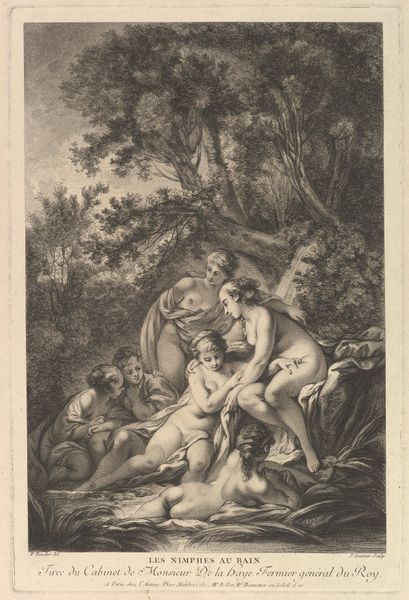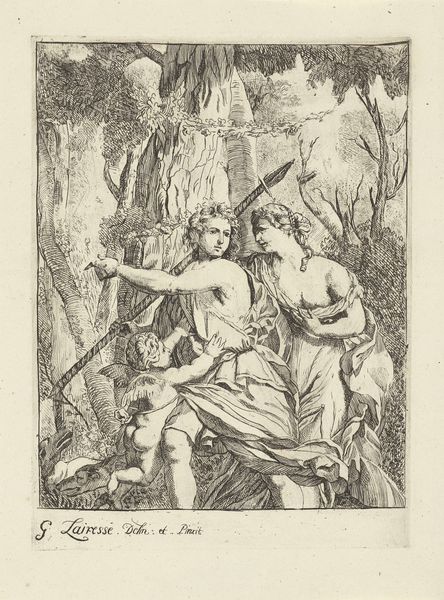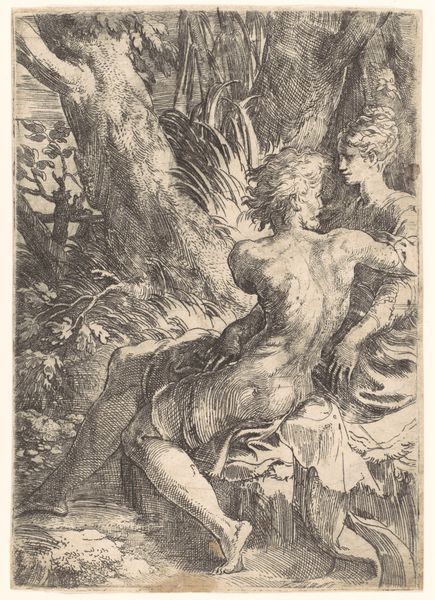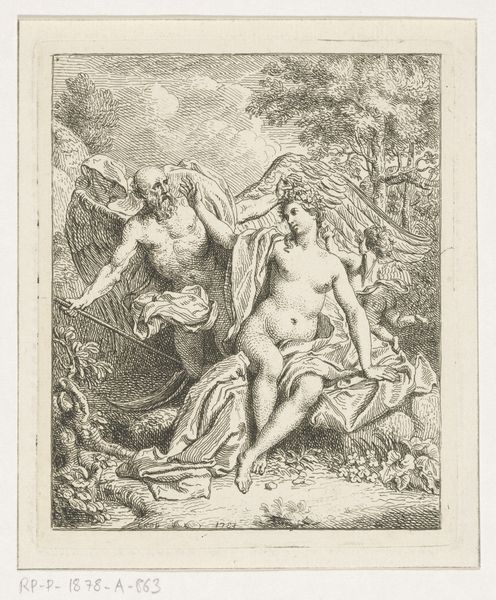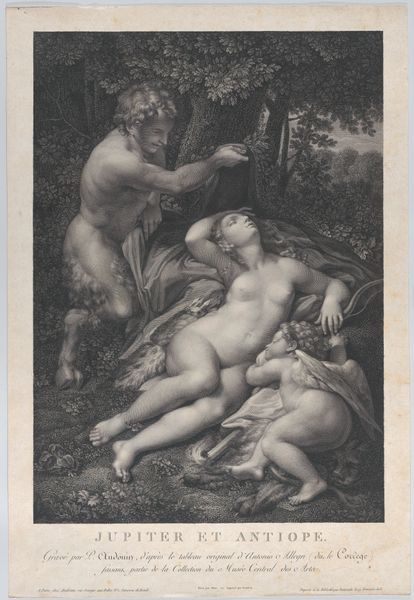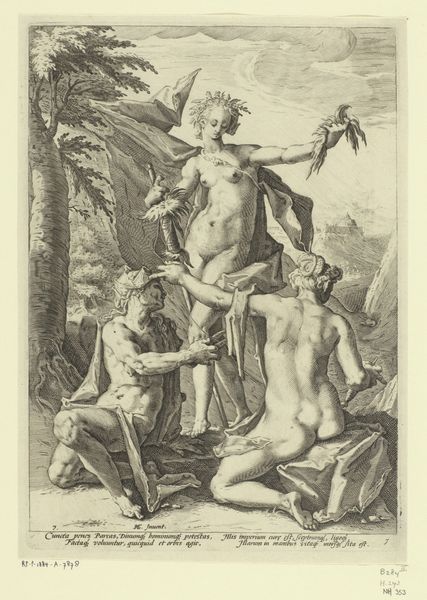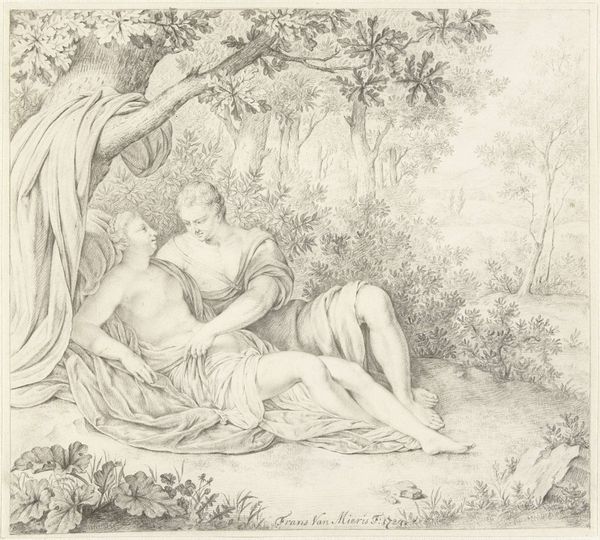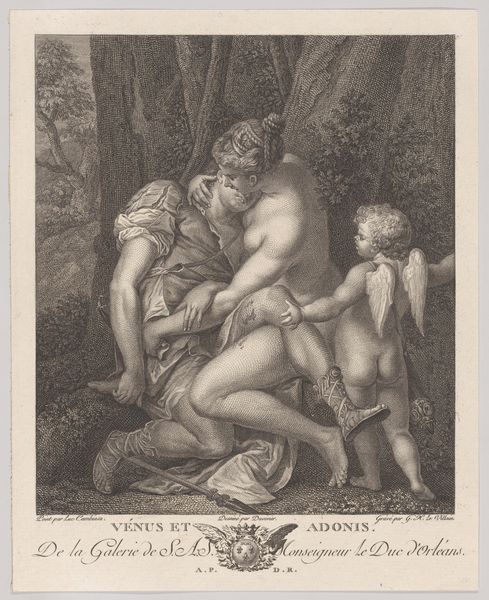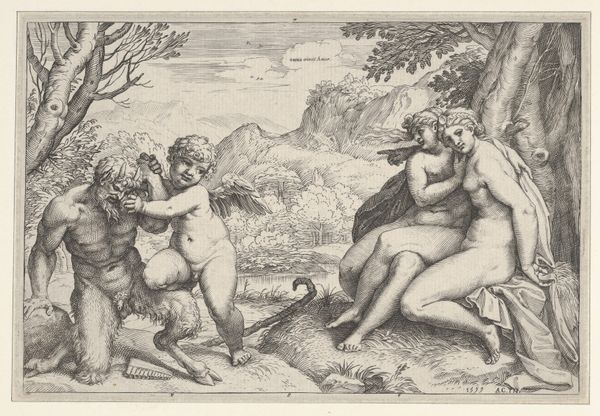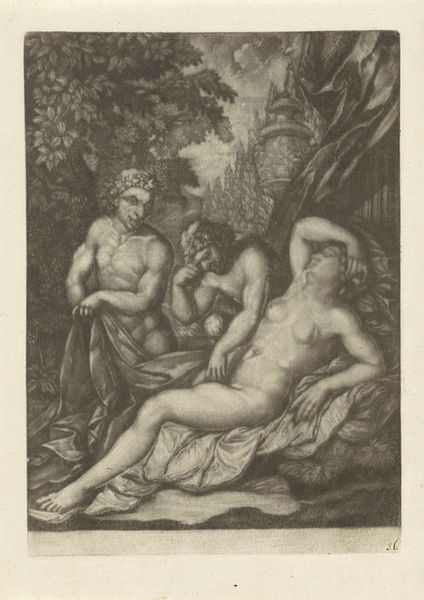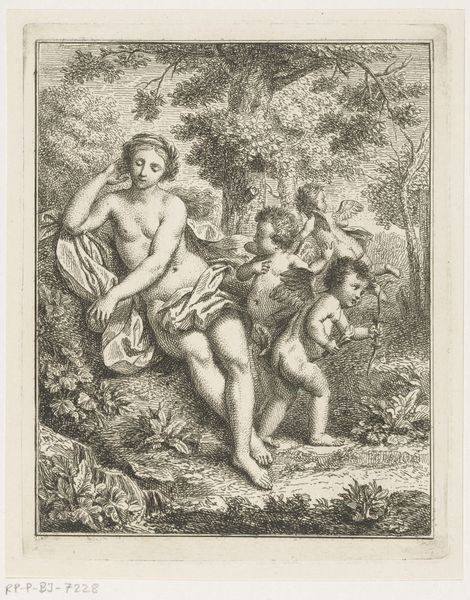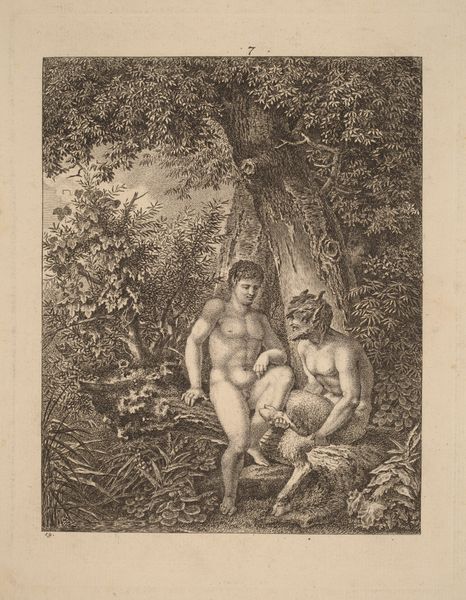
The Grâces au Bain (The Graces at the Bath) 1756
0:00
0:00
drawing, print, engraving
#
drawing
# print
#
landscape
#
genre-painting
#
history-painting
#
nude
#
engraving
#
rococo
Dimensions: Sheet: 21 1/2 x 15 3/16 in. (54.6 x 38.5 cm) Plate: 16 3/4 x 11 1/4 in. (42.6 x 28.5 cm)
Copyright: Public Domain
Editor: Here we have William Wynne Ryland’s engraving, "The Grâces au Bain," created in 1756. The sienna tones give the bathing women a warmth, a life, that contrasts with the rather somber history paintings I usually see from this era. How do you interpret this work? Curator: I see a calculated revival of classical ideals through a Rococo lens. The Graces, these figures, appear and reappear across centuries – and that speaks to our culture’s continued desire to align beauty with virtue. Doesn’t that burnt-orange tone evoke antique frescoes, faded over centuries? Editor: Yes, now that you mention it, there's a timelessness suggested by the color. What is interesting is the combination with the landscape—it seems rather idyllic, even pastoral. Curator: Indeed. Landscape itself can carry symbolism. The untamed garden, the grotto - what do these signify to you in connection with these women? Are they vulnerable in their exposure, or empowered by it? Editor: Empowered, I think. The way they lounge and wash so leisurely…it's more an expression of self-love, than inviting others. I didn’t consider that! Curator: Precisely. And consider how that message is received, generation after generation. The symbolism shifts subtly with each viewer, each era, always reflecting our evolving understanding of femininity, beauty, and the natural world. Does this idea of cultural memory add something to your appreciation? Editor: It certainly does. It transforms the artwork, layering it with meanings I hadn't previously imagined. Curator: The true beauty lies, perhaps, not just in what Ryland created, but in the dialogue it continues to inspire across time.
Comments
No comments
Be the first to comment and join the conversation on the ultimate creative platform.
